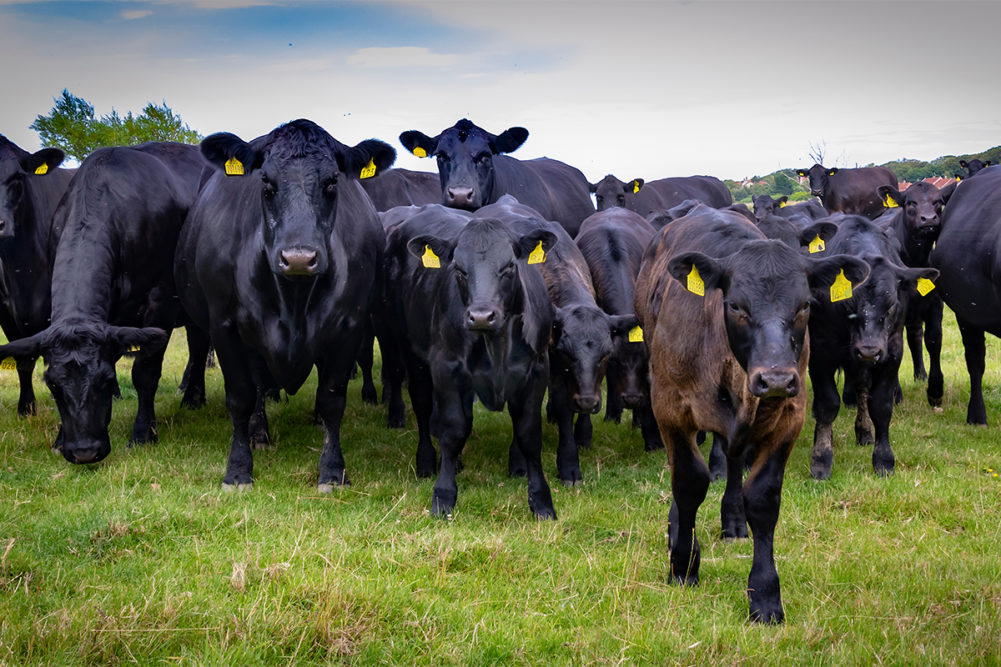WASHINGTON – The US Department of Agriculture (USDA) announced on March 5 that it would move forward with finalizing the “Inclusive Competition and Market Integrity Under the Packers and Stockyards Act.”
The agency said the new rule provides more effective standards under the Packers and Stockyards Act (PSA) that are designed to ensure fair access to economic opportunities in light of widespread consolidation in the markets over the last 30 years.
“Discrimination, retaliation, and deception against producers and growers have no place in modern livestock and poultry markets,” said Agriculture Secretary Tom Vilsack. “The Biden-Harris administration is making significant progress in tackling the abuses that have left producers and growers excluded from economic opportunities and fair and equal access to the marketplace. This rule establishes clearer, more effective standards to govern the modern marketplace, and they are another example of how USDA is focused on building new, fairer, more resilient and more competitive markets for our farmers, ranchers, and producers.”
USDA said it would finalize the rules as part of President Biden’s executive order intended to promote competition that started in 2021.
After this latest announcement from the agency, several industry trade organizations expressed dissatisfaction with the updated rule proposals.
“The Biden administration says these changes to the PSA’s regulations are about increasing competition, but they have nothing to do with competition,” said Julie Anna Potts, president and chief executive officer of the North American Meat Institute. “These changes are simply an attempt to assert even more federal authority to regulate the equities of industry business practices, clogging the federal courts with every contract dispute. Congress never intended to give the agency such broad-ranging authority over meat industry contracts and practices, regardless of their effect on competition – and the courts have agreed.”
Potts referenced the Meat Institute’s previous comments that addressed the organization’s position in 2022.
“At a time when Americans are paying more and more for food, the president and his administration continue to pursue policies that will be directly responsible for the increased cost of meat for consumers,” Potts said. “From Secretary Vilsack’s proposed changes to the Packers and Stockyards Act’s rules to USDA’s delayed modernization of pork inspection to EPA’s proposed wastewater guidelines, these policies will prove costly to the 98% of American households who purchase meat to feed their families.”
The National Chicken Council also expressed concern about the latest rules presented by the USDA.
“The Biden administration and USDA are sprinting to complete their anti-business regulatory agenda ahead of election day, an agenda being driven by far-left activists, anecdotes from a handful of disgruntled growers, and trial attorneys who are seeking to shape the regulatory environment to line their own pockets,” said Mike Brown, president of the National Chicken Council.
Brown added that the public will hear charges of ‘shrinkflation’ and ‘deflation’ levied against American businesses on March 7 during the State of the Union address.
“Instead, this administration should be looking in the mirror at the root cause: ‘Bidenomics,’ their failed policies and unnecessary regulation after regulation,” Brown said.
NCC made its comments available last year and expressed concern that the rule would impose substantial costs, including costs to growers, expose live poultry dealers to significant legal and compliance risks and undermine the poultry grower contracting system.
According to the group, the Agricultural Marketing Service (AMS) predicts the new rule to impose costs of approximately $569 per live poultry dealer in the first year of implementation and costs about half that amount in the subsequent years.
“This simply defies belief,” Brown stated. “The cost of the filing cabinets needed to hold the voluminous records that will be required would exceed that much, not to mention the extensive recordkeeping programs, computer systems, labor costs, legal fees and litigation. In reality, the cost of compliance together with anticipated litigation will undoubtedly result in costs of over $100 million, orders of magnitude greater than AMS predicts.”
The National Cattlemen's Beef Association (NCBA) issued a statement expressing its concern with the regulation's unforeseen impact on standard business practices.
“NCBA’s concern with this regulation has always been based in the rule’s unforeseen impacts to standard business practices. "We have remained consistently opposed to any discriminatory practices in the marketplace," said Ethan Lane, vice president of government affairs for NCBA. "While we still have concerns about the unintended consequences of the rule, we are pleased that USDA has addressed most of our significant concerns between the proposed and final rules. We continue to urge USDA to ensure this rule remains focused on its stated objective—with which we wholeheartedly agree—and does not stray into extraneous, unrelated subject matter discussed in the proposal’s preamble.”
The USDA explained that these actions aim to enhance independent meat and poultry and other diversified food processing capacity, expand domestic and innovative fertilizer production, create a fairer market for seeds and other agriculture inputs, invest in State Attorney General enforcement capacity, and support more robust and resilient supply chains.
“The Packers & Stockyards Act stands for the basic proposition that livestock producers and poultry growers should be able to compete, cooperate, communicate, and more without fear of retaliation, and should never be subject to discrimination because of who they are or deceptive in their contracting,” said Andy Green senior advisor for Fair and Competitive Markets at the USDA. “To deliver the best products and the most competitive prices, we need competitive markets and markets with integrity. That’s what this final rule is designed to deliver.”
The final rule will be effective 60 days following publication in the Federal Register.



